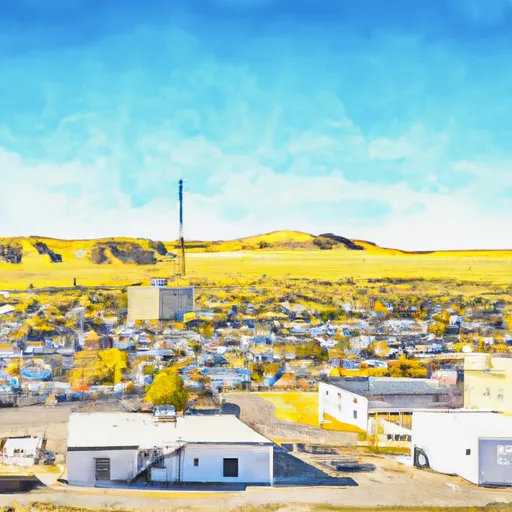-
 Snoflo Premium
Snoflo Premium
Get unlimited access to all our content
With no Ad interruptions! - Start Your Free Trial Login with existing account
Moundhouse
Eden Index
Climate
8.8
•
Recreation
6.9
•
Community
2.6
•
Safeguard
6.6/10

Moundhouse, Nevada is a small unincorporated community located in Lyon County. The area is characterized by a semi-arid climate, with hot summers and cool winters. Average temperatures range from the 40s°F in winter to the 90s°F in summer, with low humidity levels.
Hydrology constituents in Moundhouse are predominantly influenced by the Carson River, which flows nearby. The river provides a source of water for irrigation and recreational activities. Groundwater is also an essential resource in the area.
Outdoor recreation opportunities in Moundhouse are abundant. The nearby Carson River offers fishing, boating, and kayaking opportunities. Hiking enthusiasts can explore scenic trails in the surrounding mountains, such as the Virginia Range and the Pine Nut Mountains. These areas provide stunning views and opportunities for wildlife spotting.
Additionally, Moundhouse is close to the popular Lake Tahoe, known for its crystal-clear waters, sandy beaches, and various water sports activities. Residents and visitors can also enjoy camping, off-roading, and hunting in the expansive public lands surrounding the area.
Overall, Moundhouse, Nevada offers a diverse range of outdoor activities for nature enthusiasts, with the Carson River and nearby mountain ranges providing a picturesque backdrop for exploration and adventure.
What is the Eden Index?
The Snoflo Eden Index serves as a comprehensive rating system for regions, evaluating their desirability through a holistic assessment of climate health, outdoor recreation opportunities, and natural disaster risk, acknowledging the profound impact of these factors on livability and well-being.
Climate Health Indicator (CHI): 8.8
Moundhouse receives approximately
255mm of rain per year,
with humidity levels near 60%
and air temperatures averaging around
11°C.
Moundhouse has a plant hardyness factor of
7, meaning
plants and agriculture in this region tend to thrive during the non-winter months.
By considering the ideal temperature range, reliable water supplies, clean air, and stable seasonal rain or snowpacks, the Climate Health Indicator (CHI) underscores the significance of a healthy climate as the foundation for quality living.
A healthy climate is paramount for ensuring a high quality of life and livability in a region, fostering both physical well-being and environmental harmony. This can be characterized by ideal temperatures, reliable access to water supplies, clean air, and consistent seasonal rain or snowpacks.
Weather Forecast
Streamflow Conditions
Carson
Area Rivers
Carson
Snowpack Depths
Carson
Reservoir Storage Capacity
Carson
Groundwater Levels
Recreational Opportunity Index (ROI): 6.9
The Recreational Opportunity Index (ROI) recognizes the value of outdoor recreational options, such as parks, hiking trails, camping sites, and fishing spots, while acknowledging that climate plays a pivotal role in ensuring the comfort and consistency of these experiences.
Access to outdoor recreational opportunities, encompassing activities such as parks, hiking, camping, and fishing, is crucial for overall well-being, and the climate plays a pivotal role in enabling and enhancing these experiences, ensuring that individuals can engage in nature-based activities comfortably and consistently.
Camping Areas
| Campground | Campsites | Reservations | Toilets | Showers | Elevation |
|---|---|---|---|---|---|
| Washoe Lake State Rec Area | 49 | 5,056 ft | |||
| Crystal Springs | 25 | 6,065 ft | |||
| Davis Creek | 63 | 5,171 ft | |||
| Dayton State Park | 10 | 4,329 ft | |||
| Kit Carson | 12 | 6,865 ft | |||
| Mount Rose | 24 | 8,905 ft |
Nearby Ski Areas
Catastrophe Safeguard Index (CSI):
The Catastrophe Safeguard Index (CSI) recognizes that natural disaster risk, encompassing floods, fires, hurricanes, and tornadoes, can drastically affect safety and the overall appeal of an area.
The level of natural disaster risk in a region significantly affects safety and the overall livability, with climate change amplifying these risks by potentially increasing the frequency and intensity of events like floods, fires, hurricanes, and tornadoes, thereby posing substantial challenges to community resilience and well-being.
Community Resilience Indicator (CRI): 2.6
The Community Resilience Indicator (CRI) recognizes that education, healthcare, and socioeconomics are crucial to the well-being of a region. The CRI acknowledges the profound impact of these elements on residents' overall quality of life. By evaluating educational resources, healthcare accessibility, and economic inclusivity, the index captures the essential aspects that contribute to a thriving community, fostering resident satisfaction, equity, and social cohesion.

